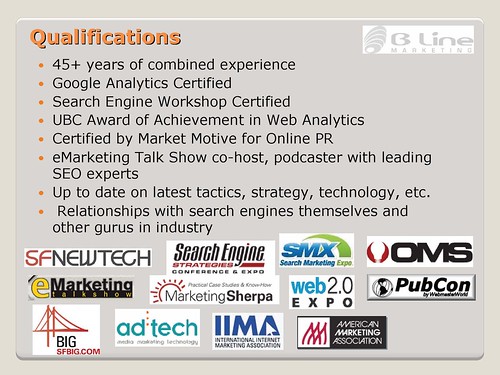A 75-year-old woman was recently arrested by the Georgian police after she single-handedly cut off Internet connections in Georgia and neighbouring Armenia.
AFP reports that the pensioner was digging for scrap metal with the intention of stealing it when she stumbled upon a fibre-optic cable which runs through Georgia to Armenia, forcing thousands of Internet users in both countries to lose Internet connection for several hours. Georgian Railway Telecom, the company that owns the cable, said that the latest damage was serious, causing 90 percent of private and corporate Internet users in Armenia to lose access for nearly 12 hours while also hitting Georgian Internet service providers.
“I cannot understand how this lady managed to find and damage the cable. It has robust protection and such incidents are extremely rare,” Giorgi Ionatamishvili, Georgian Railway Telecom’s marketing head, told AFP.
Apparently, this wasn’t the first time it happened. In 2009, another scavenger damaged a fibre-optic cable while hunting for scrap metal in the impoverished ex-Soviet state, forcing many Georgians’ Internet connections to get interrupted.
The woman has been charged with damaging property and could face up to three years in prison if convicted.
A 75-year-old woman was recently arrested by the Georgian police after she single-handedly cut off Internet connections in Georgia and neighbouring Armenia.
AFP reports that the pensioner was digging for scrap metal with the intention of stealing it when she stumbled upon a fibre-optic cable which runs through Georgia to Armenia, forcing thousands of Internet users in both countries to lose Internet connection for several hours. Georgian Railway Telecom, the company that owns the cable, said that the latest damage was serious, causing 90 percent of private and corporate Internet users in Armenia to lose access for nearly 12 hours while also hitting Georgian Internet service providers.
“I cannot understand how this lady managed to find and damage the cable. It has robust protection and such incidents are extremely rare,” Giorgi Ionatamishvili, Georgian Railway Telecom’s marketing head, told AFP.
Apparently, this wasn’t the first time it happened. In 2009, another scavenger damaged a fibre-optic cable while hunting for scrap metal in the impoverished ex-Soviet state, forcing many Georgians’ Internet connections to get interrupted.
The woman has been charged with damaging property and could face up to three years in prison if convicted.
bench craft company
 A former associate director in charge of the University of Kansas ticket office and "gatekeeper" for stolen tickets was sentenced Thursday to 57 months in prison for her role in the $2 million conspiracy.
A former associate director in charge of the University of Kansas ticket office and "gatekeeper" for stolen tickets was sentenced Thursday to 57 months in prison for her role in the $2 million conspiracy.
bench craft companyHe's named president and CEO of the News Licensing Group, launching this summer.
bench craft companyGeorge Washington University students in Washington, D.C. learned of a tragic coincidence of timing on their campus Wednesday. As President Obama delivered a speech on deficit reduction in the Jack Morton Auditorium, ...
bench craft companyApple should see a material dip, on top of the one that occurred
after I indicated that I was short the stock on March 16th. Before we
delve into my opinion, let’s peruse the news from 1 a.m. this morning:
WSJ: Apple Crunched in Nasdaq Rebalance- In
a move likely to ripple across the stock market, Nasdaq OMX plans to
announce a rare rebalancing of its Nasdaq-100 index, which will reduce
the big weighting of Apple, which currently makes up more than 20% of
the index.
Bloomberg: Apple’s Weight in Nasdaq-100 to Be Reduced as Microsoft, Cisco Are Raised
So, why do you think Nasdaq decides to reduce Apple’s weighting now?
Well, the competitive pressures that Apple faces are nigh guaranteed to
make it impossible for it to fulfill the pie in the sky expectations
that are being built for it. That in combination with a 20% weighting
create a recipe for a guaranteed crash in the Nasdaq unless something
was done about it. Signs of heavy reliance on on or two products for 70%
of their profit, while sourcing the most important parts of those
products from their biggest competitors, were starting to show. iPad 2
supplies are tight due to Japan’s woes, and Apple does not have the
mobile computing product diversity to handle it like the 150 or so
Android competitors it is battling. This means much more than just a gap
in profits for the quarter. These companies are in race, and Apple is
being forced to give up some of its lead due to diversification issues –
issues that Android manufacturers (who are more diversified because
there are so many more of them from different places) don’t have, or at
least not to the extent that Apple does. Thus, Samsung, LG, Asus, HTC,
etc. will be rolling out to customers who may have had an Apple iPhone
or iPad.
This is also another (of many) massive triumphs of BoomBustblog
research over that of the most esteemed Godman Sachs who put a $430
price target on Apple just as it was making all time highs and in direct
contravention to BoomBustBlog’s stated logic. See Shorting Apple and Why Software Developers Can Make More Money On Android Wednesday, March 16th, 2011
I have finally started dabbling with Apple
shorts and puts. My OTM S&P put positions were profitably stopped
out due to trailings yesterday when the market recovered some of its
losses. I have decided to use Apple in the place of the S&P puts
for the time being. Medium to long term, the trade is more evident and
obvious to anyone who is objective and follows BoomBustBlog. It is
significantly more risky shorter term. Alas, there are marginal gains
already, and once they accrue to the point of indemnifying my trailing
stop, I will add more. After I finish the current leg of my global real
estate research to be disseminated to institutions, I will offer
tidbits of the modeling (I have already offered subscribers significant
info on why I think Apple is a risky long play). From a contrarian
standpoint, it may be safe to go short with tight stops, after all
although Apple Gears Up To Combat The Margin Compression That Apparently Only It, Google & Reggie Middleton Sees Coming, we still have those guys over at West Street… Goldman’s
$430 Target, Screaming Buy On Apple At Its All Time High Is In Direct
Contravention To Reggie Middleton’s Logic – Who’s Right? Well, Who
Has Been More Right In The Past? I have taken The Challenge To Goldman Sach’s Apple Proclamation One Step
Farther, Apple’s Closed System Risks
Failure! Listen, everyone, regardless of what investment positions or
tech products you may have in your stable, needs to ask themselves the
appropriate “What if’s”. I have spurred the conversation with “Will Google Win The Mobile Computing War? Let’s Walk Through Where They Stand Now & How To Value Them”
Remember, I may not always be right, but it does pay to look at the track record… Did Reggie Middleton, a Blogger at BoomBustBlog, Best Wall Streets Best of the Best? More attention should be paid to the little guy, after all by now it is Now Common Knowledge That Goldman’s Investment Advice Sucks!
Didn’t you get the memo? I’m sure many traders have spurned Apple due
to the Japanese market being cut off right at the launch of the iPad 2,
but the issues go deeper than that. I will cover it in depth at a later
date, though.
Additional thoughts on the Apple short:
- Note For The Few Realistic Apple Bears… Wednesday, March 16th, 2011
- Buffet on Apple – Common Sense! Monday, March 21st, 2011
- Competition Heats Up In The Mobile Computing Space On Many Fronts – Prices Driven Down Once Again By The Big Players Tuesday, March 22nd, 2011
- How the “I Love Apple, There Is No Other Fever” Adds To The Attractiveness Of An Ever So Unpopular Apple Short Monday, March 21st, 2011
And that Research in Motion short alert
given to subscribers is working like a charm – even more so if it get’s
caught in NASDAQ storm: Research in Motion Drops 10% After Hours, Precisely As We Warned Two Months Ago – MARGIN COMPRESSION!!! Thursday, March 24th, 2011
As rumors of a later-than-usual iPhone launch for 2011 persist, a new report reveals that the notoriously secretive Apple is being even more careful than usual when dealing with overseas suppliers.
"Apple is keeping its iPhone 5 cards extra close to the vest on this launch to avoid a falloff in iPhone 4 demand ahead of a refresh, especially given the February launch of the CDMA iPhone 4 with Verizon," Analyst Brian White with Ticonderoga Securities said in a note to investors on Friday. He believes that the iPhone 5 could still launch in June or July, as previous models have.
White noted that various rumors have pointed toward a launch later than June this year for the fifth-generation iPhone. One report from March alleged that Apple has not even begun ordering components for the anticipated "iPhone 5," and the device is slated to arrive in the company's 2012 fiscal year, which begins in late September.
And a third report alleged that Apple is working on a major revamp of iOS, its mobile operating system, for version 5.0. New features like cloud-based storage of music, photos and video are rumored to arrive in the update this fall, likely alongside new iPhone hardware.
But despite all of those reports, White isn't yet convinced that the iPhone 5 will be introduced later than its typical June or July timeframe.
"Although we do not have a smoking gun that definitively rules out a delayed autumn unveiling or one that supports a launch this summer, there is a pattern of activity in motion with the supply chain that makes us question a delayed launch," he said.
White also cited sources who indicated that iPad sales could reach up to 40 million units in calendar year 2011. And supply chain sources also indicated that disruption from the earthquake and tsunami disaster in Japan will actually end up benefitting Apple, as suppliers will "rush to support Apple at the expense of competitors."
The analyst already revealed earlier this week that Apple has been offering upfront cash payments to component suppliers in order to secure components in the wake of the disaster in Japan. Apple has apparently also been using a "three cover guarantee," referring to capacity, stock and price, to block out competitors and prevent them from building ample supply of devices.
bench craft companybench craft companyIt’s not such a wonderful time to be a doctor, patient, hospital, health plan or pharma company, but judging by the quality and quantity of entries received for this edition of the HWR, it’s a wonderful time to be a wonk.
A couple weeks ago CMS released draft rules for Accountable Care Organizations. Several bloggers weighed in on that development:
- Mark McClellan and Elliott Fisher at Health Affairs provide some historical context and argue that “those who care deeply about health care reform all have a common interest in the success of ACOs as a way of avoiding more classic fee-for-service payment cuts to providers.”
- On a more downbeat note, The Road to Health concludes, “Dr. Berwick and his colleagues at CMS appear to have taken the ACO concept and made it into a financial program that only delusional practice administrators, or physician organizations bent on financial self-destruction, could love.”
- The Healthcare IT Guy expects ACOs to be “far more lucrative and disruptive than Meaningful Use and likely to yield more patient quality improvements.”
- GE Healthcare puts the emphasis on ACO change management challenges: “Healthcare executives and management teams are left to focus on preparing their organizations for a cultural shift of seismic proportions.”
- HealthBlawg reviews the proposed rules and produces 8 takeaways. #2: “This is the Frankenstein regulation: A Medicare beneficiary must sit on the board of the ACO, CMS must approve all marketing materials before they are used.”
In the midst of the battle over funding the 2011 budget, House Budget Chairman Paul Ryan came out with a plan to radically restructure Medicare and Medicaid starting in 2012:
- The Apothecary likes much of what he sees and thinks the proposal may force Democrats to devise a credible plan of their own
- John C. Goodman’s Health Policy Blog contrasts PPACA and the Ryan plan. “Obviously, the path we are on leads to an impossible place. So the only question is whether we are going to get off the current path in a planned, orderly way or whether we are going to let unplanned chaos do the trick.”
- Wright on Health is less impressed and wonders, “if Rep. Ryan is so adamant about reducing the deficit, why is he cutting taxes for the wealthy and cutting programs for the poor and the elderly?”
- Managed Care Matters is decidedly unswayed. “If you were looking for real solutions to the health cost problem, you’re going to be sorely disappointed… Unfortunately, he’s fallen into the same trap his Democratic colleagues did with their version of health reform – the Ryan plan does little to address costs.”
- The Incidental Economist takes issue with Ryan’s plan to convert Medicaid to block grants and cut spending. “Should Medicaid be cut back, more people will be uninsured. Contrary to what some wish you to believe, those who become uninsured will suffer worse health outcomes”
As if the ACO rules and Ryan plan weren’t enough, there’s more on Medicare in the blogosphere:
- The Covert Rationing Blog –always good for a lighthearted pick me up– “asserts that we are one giant step closer to the day when it will become illegal for all Americans to spend their own money on their own healthcare.”
- Dr. Liberty discusses CMS’s deliberations on whether to pay for Provenge, a pricey prostate drug. “Decisions are made on the basis of politics, and the drive is to cover everything, leading to higher costs.”
Amid all the federal policy blogging, there’s still some room for technology talk:
- Healthcare Talent Transformation has had it with Health Net’s repeated goof up’s leading to loss of confidential data. Although it may seem like there’s not much the average person can do, the blog argues, “You can make an impact on the security of your sensitive data by conducting due diligence when it comes to your insurance provider.”
- The Healthcare Blog offers a video collage of the new Kaiser Permanente Center for Total Health. “The Center is a pretty fascinating place–part tech and idea showcase and part meeting room. Certainly no other health care organization that I’m aware of has spent so much on a place designed to stimulate the imagination and enhance conversation–under the nose of the folks on Capitol Hill.”
- Meaningful HIT News features a podcast with mHealth Initiative’s Peter Waegemann, who’s shifted over from EMRs to ride the mobile wave
- Healthcare Economist delves into new papers that, “examined how to develop accurate algorithms to account for cancer stage in studies using claims data.”
It was encouraging to receive a couple submissions about journalism:
- Disease Care Management Blog asks, “Is the kerfuffle over National Public Radio (NPR) the long delayed comeuppance for liberal bias run amok, or a narrow-minded attack on the inconvenient truths from journalistic excellence?” The blog reaches into the world of medicine and discusses of “framing” and its impact on patient decision making to provide an answer
- HealthNews ReviewBlog cites, “daily evidence of the need for improvement in health care journalism – especially when we see examples like hype of a tiny, preliminary study of strawberries for esophageal cancer.”
We always have room in the Health Wonk Review for some posts on medical ethics:
- Nuts for Healthcare looks at the pharma industry and concludes, “Doctors need to take a more definitive stand against the specter of industry influence. A good target? Industry sponsorship of continuing medical education.”
- Health Care Renewal is concerned that so-called government run programs are more private than we think. “The majority of Medicaid has been out-sourced to private health care insurance companies… We need to have some real discussions about the rise of corporatism in US health care, in other aspects of US society and around the world.”
And finally, a few odds and ends
- Workers’ Comp Insider provides resources for employers concerned about radiation exposure
- Colorado Health Insurance Insider chronicles the decline of bipartisanship in the creation of a health insurance exchange for that state. “Healthcare reform has become such a polarized topic that it’s difficult for lawmakers to have any stance other than for it or against it. Even though the health insurance exchanges would be marketplaces that sell private health insurance, the word ‘exchange’ has been thrown around so much during the reform debates that many opponents of the PPACA see it as synonymous with ‘ObamaCare.’”
- Last week I went to a health care direct to consumer marketing conference to see former TimeWarner CEO Jerry Levin interviewed by OrganizedWisdom CEO Steve Krein. I also shared my thoughts in the video clip below
Thanks for reading the Health Wonk Review! The Incidental Economist hosts the next edition.
Share
Next, Odeo moved into an office and started hiring more employees – including a quiet, on-again, off-again Web designer named Jack Dorsey and an engineer named Blaine Cook. Evan Williams became Odeo's CEO.
By July 2005, Odeo had a product: a platform for podcasting.
But then, in the fall of 2005, "the shit hit the fan," says George Zachary, the Charles River Ventures partner who led the firm's investment in Odeo.
That was when Apple first announced iTunes – which included a podcasting platform built into every one of the 200 million iPods Apple would eventually sell. Around the same time, Odeo employees, from Glass and Williams on down, began to realize that they weren't listening to podcasts as much as they thought they would be.
Says Cook: "We built [Odeo], we tested it a lot, but we never used it."
Suddenly, says Zachary, "the company was going sideways."
By this point, Odeo had 14 people working full time – including now-CEO Evan Williams and a friend of his from Google, Christopher "Biz" Stone.
Williams decided Odeo's future was not in podcasting, and later that year, he told the company's employees to start coming up with ideas for a new direction Odeo could go. The company started holding official "hackathons" where employees would spend a whole day working on projects. They broke off into groups.
Odeo cofounder Noah Glass gravitated toward Jack Dorsey, whom Glass says was "one of the stars of the company." Jack had an idea for a completely different product that revolved around "status"--what people were doing at a given time.
"I got the impression he was unhappy with what he was working on – a lot of cleanup work on Odeo."
"He started talking to me about this idea of status and how he was really interested in status," Glass says. "I was trying to figure out what it was he found compelling about it."
"There was a moment when I was sitting with Jack and I said, 'Oh, I do see how this could really come together to make something really compelling.' We were sitting on Mission St. in the car in the rain. We were going out and I was dropping him off and having this conversation. It all fit together for me."
One day in February 2006, Glass, Dorsey, and a German contract developer Florian Weber presented Jack's idea to the rest of the company. It was a system where you could send a text to one number and it would be broadcasted out to all of your friends: Twttr.
Noah Glass says it was he who came up with the name "Twttr." "I spent a bunch of time thinking about it," he says. Eventually, the name would become Twitter.
After that February presentation to the company, Evan Williams was skeptical of Twitter's potential, but he put Glass in charge of the project. From time to time, Biz Stone helped out Glass's Twitter team.
And it really was Glass's team, by the way. Not Jack Dorsey's.
Everyone agrees that original inkling for Twitter sprang from Jack Dorsey's mind. Dorsey even has drawings of something that looks like Twitter that he made years before he joined Odeo. And Jack was obviously central to the Twitter team.
But all of the early employees and Odeo investors we talked to also agree that no one at Odeo was more passionate about Twitter in the early days than Odeo's cofounder, Noah Glass.
"It was predominantly Noah who pushed for the project to be started," says Blaine Cook, who describes Glass as Twitter's "spiritual leader."
"He definitely had a vision for what it was," says Ray McClure.
"There were two people who were really excited [about Twitter,]" concurs Odeo investor George Zachary. "Jack and Noah Glass. Noah was fanatically excited about Twitter. Fanatically! Evan and Biz weren't at that level. Not remotely."
Zachary says Glass told him, "You know what's awesome about this thing? It makes you feel like you're right with that person. It's a whole emotional impact. You feel like you're connected with that person."
At one point the entire early Twitter service was running on Glass's laptop. "An IBM Thinkpad," Glass says, "Using a Verizon wireless card."
"It was right there on my desk. I could just pick it up and take it anywhere in the world. That was a really fun time."
Glass insists that he is not Twitter's sole founder or anything like it. But he feels betrayed that his role has basically been expunged from Twitter history. He says Florian Weber doesn't get enough credit, either.
"Some people have gotten credit, some people haven't. The reality is it was a group effort. I didn't create Twitter on my own. It came out of conversations."
"I do know that without me, Twitter wouldn't exist. In a huge way."
By March of 2006, Odeo had a working Twitter prototype. In July, TechCrunch covered Twttr for the first time. That same summer, Odeo employees obsessed with Twitter were racking up monthly SMS bills totalling hundreds of dollars. The company agreed to pay those bills for the employees. In August, a small earthquake shook San Francisco and word quickly spread through Twitter – an early 'ah-ha!' moment for users and company-watchers alike. By that fall, Twitter had thousands of users.
By this point, engineer Blaine Cook says it began to feel like there were "two companies" at Odeo – the one "Noah and Florian and Jack and Biz were working on" (Twitter) and Odeo. Twitter, says Ray McClure, "was definitely the thing you wanted to be working on."
bench craft companySo we have rolled out a redesigned Google News for Opera Mini in all 29 languages and 70 editions of Google News. This includes an enhanced homepage featuring richer snippets, thumbnail images, links to videos and section content ...
bench craft companyRead our Wii news of Wii 2 to be revealed at E3 – report.








